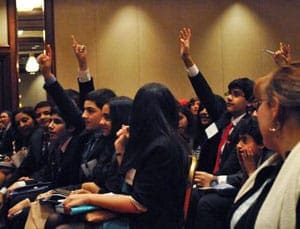Andrew Rosenberg ’12 recognizes that his native Iowa—known for corn, soybeans, and the state fair—might...


Andrew Rosenberg ’12 recognizes that his native Iowa—known for corn, soybeans, and the state fair—might...

Chris Benner ’12, like countless other American students, has declared F. Scott Fitzgerald’s Great Gatsby...

In 2004 and 2005, women who didn’t like their looks could win makeovers on the...

Clad in business suits and high heels, flocks of young men and women hurry down...
I was unpleasantly surprised to learn of the death of analog (darkroom) photography. Until “The...

In January, the Federal Reserve Board appointed Professor Jon Faust as special adviser in the...

When in search of a creative outlet, Johns Hopkins undergraduates need look no further than...
I enjoyed the interview with poet and professor Mary Jo Salter [Fall 2011, “A poem...
Thanks for the photo spread on the “Great Wall of Waverly” [Fall 2011]. The mural...

As China’s economy continues to grow, so does the country’s scientific and technological prowess. Decades...

A rendering of the renovated Greenhouse, which will house the Academy. When esteemed university professors...

Growing up in Houston, William McCance ’12 never saw much graffiti. Then he came to...